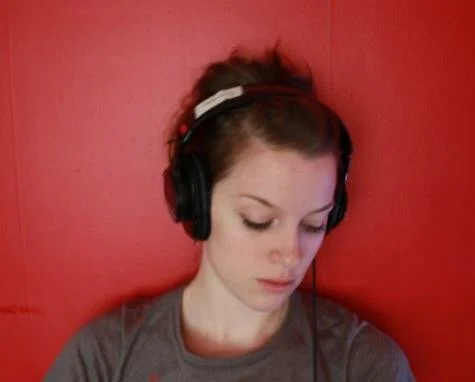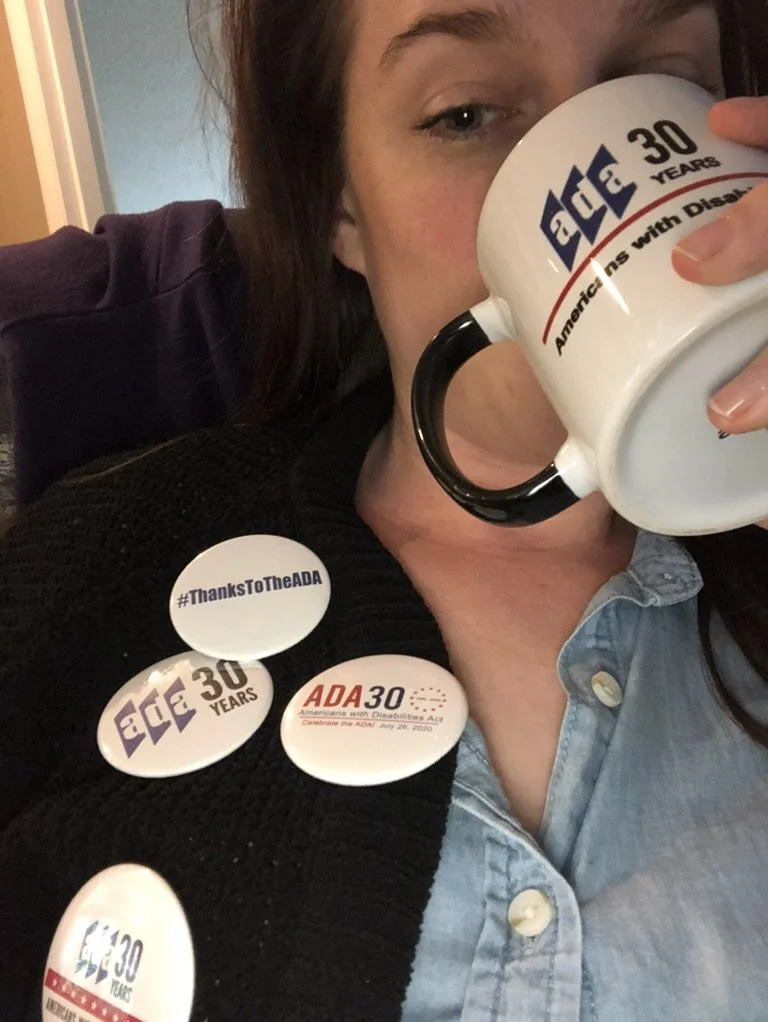How I Accepted My Mental Illness Through Language and Why Preference Matters
You can’t say that
Mental health and the journey to diagnosis, especially for a chronic or “severe” mental illness, is a rollercoaster. One in which emotions, identity, pain, relief, grief, and trauma collide.
It is also a rollercoaster to find the language to name something that is both intensely personal and yet defined by medical, academic, and societal definitions.
In the past decade and a half that I have been writing about my mental illness, words, terms, and phrases have come and gone from popularity. I had a corporate client ask me to edit an article written to exchange all mentions of “depression” for “burnout” and “anxiety” for “stress.” In another article, an editor asked me not to refer to mental health struggles as a disability. I have also watched as the words of mental health have moved between illness, to challenges, to struggles, and back again.
And in the middle of all of these adjustments to language has been my internal sense of identity as a woman living with bipolar, anxiety, and anorexia.
When you can’t find the words
I was initially diagnosed with depression in high school. At the time, we couldn’t quite figure out if it was teen angst, an over-scheduled life, or a series of chronic sinus infections. I began seeing a counselor who quickly sent me to a doctor who prescribed anti-depressants. After my initial attempt to comply, I quickly flushed them down the toilet.
Like most sixteen-year-olds, I did not want to feel different from my peers. However, the new medical diagnosis made me feel crazy, and the pills that came with it brought physical and emotional numbness. This episode was my first hazy look at how mental health connected to my identity, even if I was not mature enough to recognize it as such. I did not want to claim mental illness as an identity, which, to me, was what accepting a diagnosis of depression meant.
Unfortunately for me, and against my teenage wishes, my symptoms persisted into college, where I finally received my accurate diagnosis of bipolar. After years of trials and errors and literally a book's worth of chaos and drama, I finally began to accept that I did indeed have mental health struggles and perhaps even a mental illness.
What’s in a name
Words are complex. The act of naming is so powerful that it can change our entire understanding of something. The diagnosis of bipolar and the ability to provide a name for my symptoms and experience created both a suffocating sense of doom and a profound relief. This naming, this grouping of random items into one solid thing, meant that I wasn’t just making it up.
I found that paradoxically, being diagnosed as mentally ill made me feel less crazy because it wasn’t me just “acting out” or being “sensitive.” It was, in fact, something in my brain that I couldn’t control without knowing what it was. This diagnostic naming was a relief that I wasn’t the problem.
But it also felt like a death sentence in the linking of me with a history of suicidal manic depressives. The dramatic, literature-loving teenager I was thought immediately of the great, mad artists of the world who burned bright and died young.
So, I burned hard and bright. I acted out my pain and rage, knowing that I was set to be unstable now. I thought I had the ultimate gift of creativity in my unique ability to feel the world, but in the end, I knew it was not meant to last long.
With the best of intentions
Jump forward a hospital stay or two, and I gained enough acceptance to become a national mental health advocate on the road, giving inspirational talks across America. I published my book, Perfect Chaos (Saint Martins, 2012), with my mom, and we traveled from conference to conference, sharing our stories of trauma and inspiration.
These years were powerful in my healing. I was accepting my symptoms and finding my voice as an advocate. I built a strong community of people who had gone through similar experiences. Many told me my book helped them feel less alone, which in turn made me feel less alone. I even had a particular section of my talks devoted to self-empowerment for young adults.
It was during this time I learned about person-first language and was instructed by a mentor to say I was a person with bipolar, not a bipolar person. They explained that this demonstrated that my illness was not me but a part of me. Or as I began to see it, an external part of me. I even began policing the language of other advocates, telling them that person-first was the appropriate terminology.
(And let me give a BIG apology here to these badass activists for living on their own terms. I am so sorry that I assumed I knew better than your preferences. Thank you for teaching me through your ability to push the boundaries of people’s discomfort to be authentically you.)
The weight of person-first language
But soon, person-first language began creating an external struggle for me. It was like a bipolar weight around my shoulders that started to feel like too much to bear. While I felt comfortable using person-first language for others and in formal settings and publications, something about it felt too heavy to hold.
About a decade after my official diagnosis, I hit a patch of depression and suicidality that I could not shake. At that time, I had been hospitalized perhaps four or five times, but this one was different. It was at this time that I was done living with this disease.
I had lived a good life, one of accomplishments and love and support, but the pain just kept coming back. I felt that I simply could NOT accept it any longer, and there was no amount of person-first or alternate word usage (mental health challenge, mental health condition, mental health struggle) that would make the sheer amount of agony it brought in the worst days to life worth living.
The gift of role-models
It was at this moment I was given a gift. Around this time, I began working for the Americans With Disabilities Act National Network. I worked as an information specialist, immersing myself in all things marketing, social media, and content development for disability rights. I helped promote, edit, and organize fact sheets, research briefs, and Twitter Chats around the ADA, and I developed strong professional and personal relationships with mental health activists and advocates worldwide. It was at this time I discovered identity-first language and the existence of nuanced views on mental health and mad pride.
Though I had seen Zines about mad pride and the use of identity-first language, I continued to get pulled back into the mindset of seeing mental illness as a medical diagnosis that was threatened by the teachings of these outside forces.
My youthful black-and-white thinking led me to believe these individuals were against me and the resources I used to remain stable, mainly medication and electro-convulsive therapy. But as my world grew through disability advocacy, I saw that though there may be individuals who advocate against these medical interventions, there are few sitting around judging my character for using treatments that keep me stable.
Stepping away from black-and-white-thinking
As I helped to organize the 30th Anniversary of the ADA and a Symposium on the science and research surrounding the law, my world continued to expand. I met people who were proud to have disabilities—people with mad pride who believed you could hate the pain and suffering you experience while still acknowledging the importance of your disability to your life and personhood.
I met people who preferred identity-first language because their disability was part of who they saw themselves to be. It was a part of themselves that couldn’t be separated from their identity.
As I slowly played with calling myself a bipolar woman, I began to feel the painful weight around my shoulders disperse throughout my body. I no longer felt I had to drag it behind me or carry it from shoulder to shoulder on a long, hard walk. Instead, it was part of me as a whole, allowing me to see it as something I could build muscle and endurance to navigate over time. I started to see it as a part of me that I could intrinsically understand and develop.
Mental illness is a disability
As I began to play with my use of identifying language, I also began to confront my internalized ableism that had told me mental health challenges were not a disability. I told myself these were not a disability because I didn’t want to be disabled. I didn’t want to be disabled because I saw it as limiting and negative. I saw the world built with inaccessibility and desperately clung to an identity that did not need support.
In challenging these assumptions, however, I learned that by acknowledging my mental illness as a disability, I had rights and resources. I realized that I was not alone and that people were talking about the spoon theory, using assistive technology, and finding hacks to help them get their laundry done, even when suicidally depressed. There was a community of people like me who were outsmarting the system and building a beautiful community along the way.
Today, I am happy to see disability pride continue to expand as we amplify conversations about neurodivergence, mental health, and accessibility. Conversations and education around intersectionality are helping to enrich the conversation, allowing us to learn that there is no one way to do things, discuss things, or name things.
I am a bipolar woman who has bipolar
Today, I use person-first language in writing and speaking unless I know someone’s preferences. I am not against first-person language and know many individuals who find it the most helpful and empowering language for their lives and identities. These days, I better understand the nuance of language and the complexity of disability. There is no wrong way to identify yourself if it brings you solace and empowerment.
Today, I also identify as a bipolar woman. I integrate my diagnosis with my identity, seeing it not merely as a list of symptoms I need to keep outside of me but rather as a set of personality traits, quirks, preferences, and sensitivity built into my core. In allowing myself to be open to the complexity and nuance of language, personal preference, and diversity, I found myself along the way and healed a pain I did not think I could survive.
I can’t say there aren’t days I wish the symptoms would never rear their ugly heads again. But I also can’t say I won’t miss them in a strange way for the gifts they bring along the way. While I would not wish this struggle on anyone else, I can honestly say I would not have lived such a beautiful, meaningful, and passionate life without it.
I can’t wait to see what I learn in the next few decades and how language continues to evolve. For now, I choose to be fluid and open, knowing that having one solid belief about my identity will only hold me back. Today, I choose to keep learning, feeling, and having pride in all parts of myself.















I found that paradoxically, being diagnosed as mentally ill made me feel less crazy because it wasn’t me just “acting out” or being “sensitive.” It was, in fact, something in my brain that I couldn’t control without knowing what it was. This diagnostic naming was a relief that I wasn’t the problem.